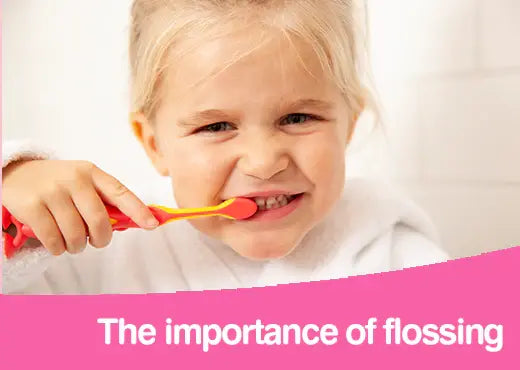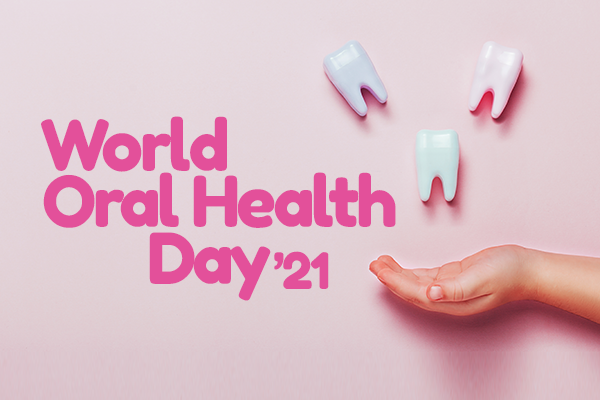Tooth-friendly Weaning Tips

At 6 months old, weaning typically crops up on the baby to-do list. This may come as a relief to some but fills others with dread. Whichever camp you sit it, there is no escaping that it’s the next big step in your little one’s development.
A great way to ensure your little one’s teeth are being properly looked after whilst weaning is to use a tooth wipe around the gums, mouth and emerging teeth to clean away any harmful bacteria. You may also use a soft bristle toothbrush and some teething toothpaste to introduce your child to a tooth brushing routine.
It is important to acknowledge that not everyone starts weaning at 6 months, some babies start earlier and others later. Do what you feel is best for you and your baby.
However, one practical reason why weaning often starts at 6 months is that it often coincides with the beginning of teething and mums feeling increasing discomfort when breast feeding. Please remember, whether weaning from the breast or bottle, if your child is less than 12 months old, they will still continue to need either expressed breast milk or formula to continue their healthy development.
To help you and your little one get off to a great start on this exciting culinary journey, we have collated a list of our favorite weaning tips to share with you.
Eliminating feeds, one by one
A great tried and tested way to gradually wean away from breastfeeding is to start by eliminating one feed at a time. Whether that’s morning, day or night feeds - this will help your child and your breasts gradually adjust to the new routine.
The same approach can apply to weaning from the bottle too; start replacing some of your feeds with a sippy cup until your little one adjusts to the new feeder!
Create a schedule to keep on top
If you are nursing on demand, another tip to help the reduction process is to start by creating more of a schedule, so that you can see how often and how long your child is on the breast. Once you have a pretty set schedule it will help you to know where you can start eliminating one feed at a time.
Depending on your routine and child care situation, some mums find it best to start by eliminating the daytime feeds first, keeping the morning and bedtime feeds in place longest.
Avoid the familiar
Avoiding getting into familiar breastfeeding positions while you are in the process of weaning is also said to help the little one adjust better to their new routine. If it’s possible, have dad or grandma take over a feeding or two to switch-up the routine as well.
Replace feeds with extra comforting!
Children tend to be more attached to the first and last feeds of the day, when they enjoy a little more comfort than usual. These feedings might be the last ones your child drops, but replacing them with extra cuddles and quality time with mum and dad can ensure they still get the comfort they need.
Choose the best bottle tip
If you are weaning onto a bottle, it’s best to choose one with a slow flowing nipple at first. If you use a bottle nipple with a fast flow, your child might become accustomed to that and become frustrated with the different flow rates of milk during breastfeeding… leaving you stuck in the middle! Avoid having to advance your weaning plan and pick the bottle head that mimics your flow best.
Focus on distracting
Although to some, refusing to breastfeed when weaning can seem like the best idea – it has been shown to have negative effects, like increasing your little one’s focus on the activity. If your child does want to nurse, feel safe to nurse them but continue working to distract them with new foods, activities and sources of reassurance, to help direct their focus elsewhere at other times.
Time tricks!
Another good tip that can help avoid the weaning process having a negative impact on either mum or baby, is to start cutting down the duration of the feeding sessions.
This can be started by breastfeeding for five minutes on each breast for five days first. Then four minutes on each side for four days, three minutes for three days, and so on until, on the last day, one minute on each side by which time they will hopefully be reaching for the bottle or cup!
Swap liquids…
To wean your child gently you can also gradually diminish the amount that’s fed to them by breast or bottle, and offer them a cup with the remaining amount of milk afterwards. This little trick is a magic way to keep them hungry for more, getting them naturally wanting the bottle or cup!
Set time limits with bottles / cups
Finally, if your little one has taken to the bottle or cup smoothly, we need to be mindful that they don’t keep them in their mouths too long.
Children can become accustomed to keeping the bottle or cup in their mouths for comfort, but unfortunately this can lead to their newly exposed teeth being pushed out of place and plaque buildup from liquids resting on their teeth for too long. Start to reduce this by offering the bottle or cup at designated times, being sure to take it back once they have finished. It will help their little teeth in the long run!
We hope these tips are useful and as ever, we’d love to hear about your own top weaning tips!







